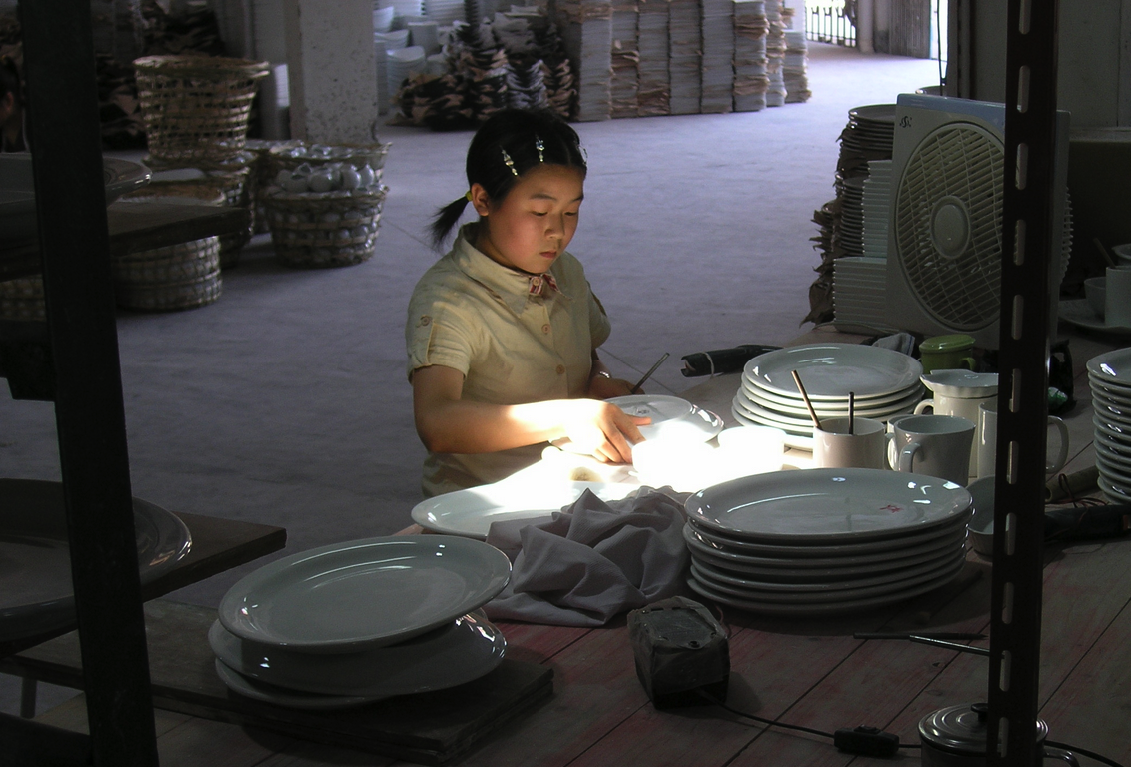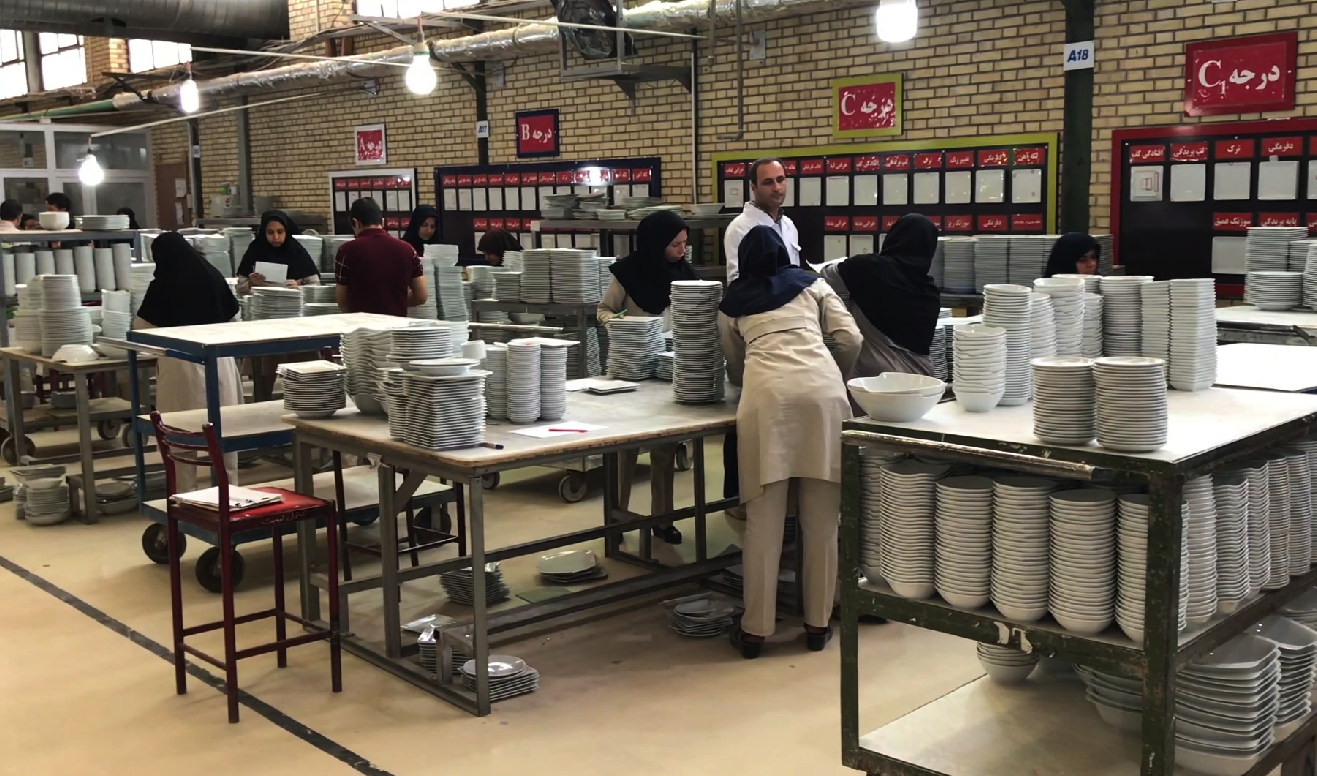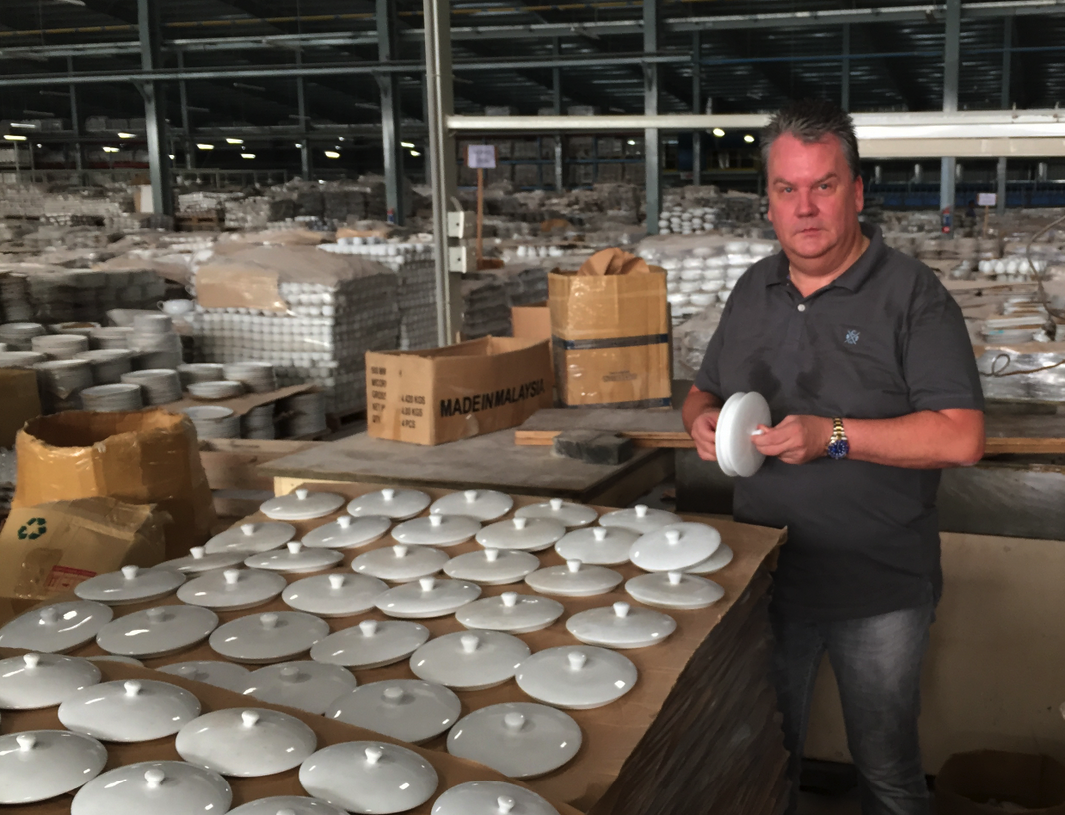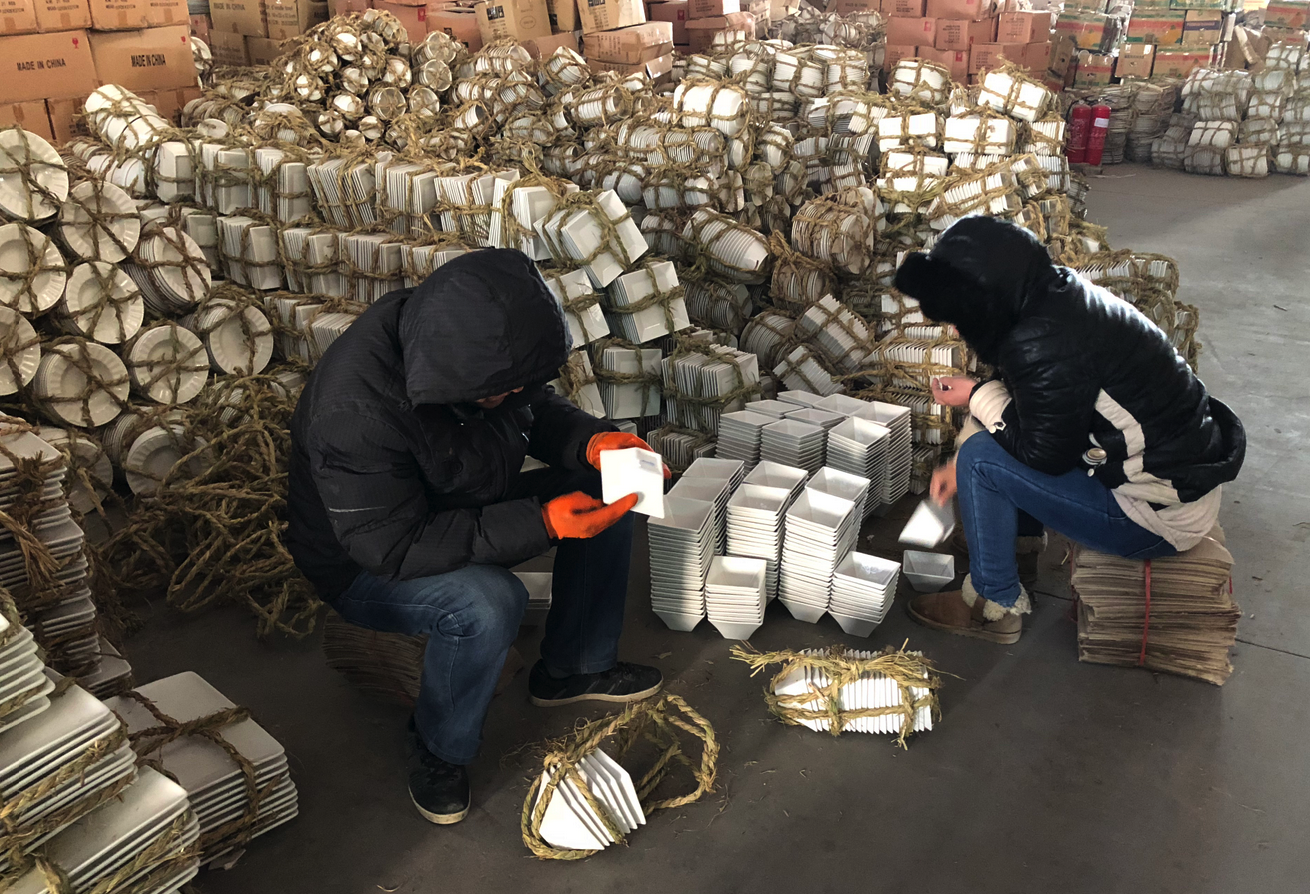Sorting
Sorting and levels of quality in Porcelain industry
Nach dem Brennvorgang des Hartbrandes erfolgt das "Abnehmen" der Geschirrteile vom Ofenwagen, den Trägern oder Transportketten und das Bereitstellen für die Qualitätskontrolle. Erst im endgebranntem Zustand lässt sich die visuelle Qualität eines Geschirrteils bestimmen. Wie eine Qualitätssortierung letztlich ausfällt obliegt dem Anspruch und den Möglichkeiten der Fabrik selbst. Demnach gibt es keinen einheitlichen Sortierstandard, der dem Verbraucher in Form einer fest definierten Güteklasse die Sortierkriterien transparent sicherstellt. Qualitätssortierungen zählen ferner eher zu der im Europäischen Raum weiterentwickelten Porzellanindustrie, als zur traditionellen Herstellung aus dem asiatischen Raum.
In den Jahren zwischen 1955 und 1985 wurden die Sortierungsstandards in Europa von den starken Deutschen Marken geprägt. Deren Anspruch an äußerlicher Perfektion haben den Begriff "Erste Wahl" geprägt der bis heute - leider meist fälschlicher Weise - seine verkäuferische Anwendung findet. 1. Wahl wurde gerne in Zusammenhang mit "Made in Germany" aufgeführt und führte i.d.R. zu einem schwer erreichbaren Qualitätsstandard vor allem für alle Wettbewerber außerhalb Deutschlands. Kurioserweise waren es die Regeln selbst, die den Deutschen Sortierungsanspruch letztlich zerstört, bzw. aufgeweicht haben.
Sorting principle
The same sorting principle applies in all countries and in all factories around the world: the first-choice yield must finance the losses of the scrap! This creates an inevitable connection between "price capability" and "sorting criterion" of the respective tableware and is thus not only determined by the manufacturer's own production characteristics, but also to a large extent by the price positioning of the seller.
Sorting processes

As early as 1982, the Rosenthal Group (when it still existed) experimented with an automatic sorting line. However, to our knowledge, this was never fully commissioned. Too many porcelain articles have to be subjected to very different test criteria. A clean hall, good light and a smooth delivery and collection are the basic spatial requirements for a reasonable quality sorting.

Afterwards, one - or, as in the picture above, several eyes are required to occupy the sorting station. Inspection with several employees enables better and faster control, as the employees are trained on only a few criteria, which can then be inspected in shorter periods and processes.

Additional functional tests are extremely time-consuming and strenuous if not only the external condition of a piece of tableware has to be checked, but also its interaction with another production element. Only the combination of bottom part and lid results in the article Cocotte.

Within the company, we call this type of quality sorting the "EGAL sorting" - which you can usually do without. Often in dark, cold halls, employees crouch on the floor and have to check thousands of items in a few hours. Often they do not even know what exactly they should check and are left to their own judgment.
In addition to the principles of the Verband der Keramischen Industrie Deutschlands (VKI) - recorded in the small porcelain bible of Hans Friedl, we at Holst Porzellan define the quality levels of porcelain in the following criteria
Article description "A-grade" or "First choice"
- The shard is flat and straight, showing no deformation or distortion.
- In cups and mugs the mouth opening is really round and does not deviate into an oval.
- Plates and plates sit evenly on smooth surfaces and do not cause any rattling or bouncing when pressure points are on one side.
- Lids close flush with their bodies and have no openings at the edges.
- All bottom edges are cleanly ground and show no production residues. The glazes on the upper and lower edges are even and translucent, show no gradients or glaze noses, no pinholes or iron stains.
- First choice is free of any defects or other disturbing optical impressions.
Depending on factory, country or technology, the additional cost of 1st choice to the nearest lower quality level is between 50 and 70%.
Article description "B-grade" (products with small defects)
- The shape of the shard shows slight deformation, flat parts can easily wobble.
- On closer inspection the glaze appears uneven with a disharmonic refraction of light. Often the ware shows smaller glaze gradients (noses) and the body appears porous.
- There are smaller iron stains on the surface or craters in the glaze. The feet are partly uncleanly worked, undersides unevenly, partly uncleanly cleaned.
- In the case of cast articles, you can see the mould openings running translucently along the body of the article like a straight line.
- Different articles of the series have color differences or appear in a different shard character
Article description "C-grade" (defective products)
The article has lost its intended usability or is no longer suitable for use on the table or blackboard in every respect due to deformation, color deviations, missing product details or other damage. In other words: C-goods belong in the garbage can!
